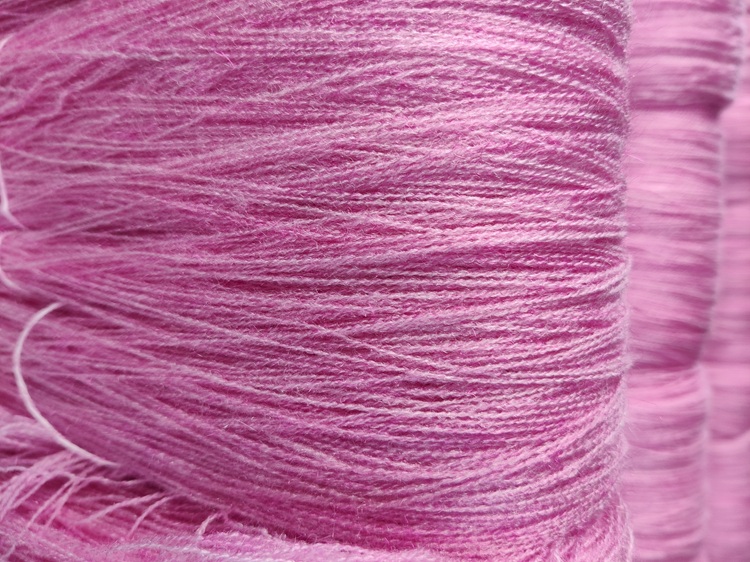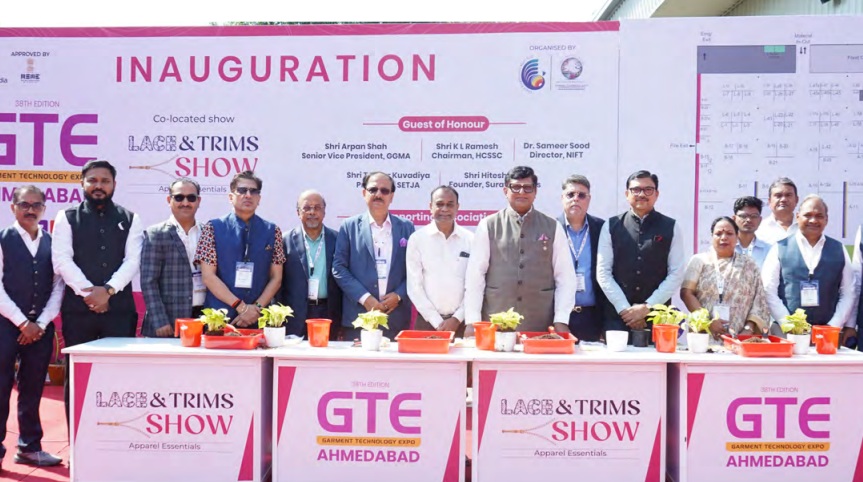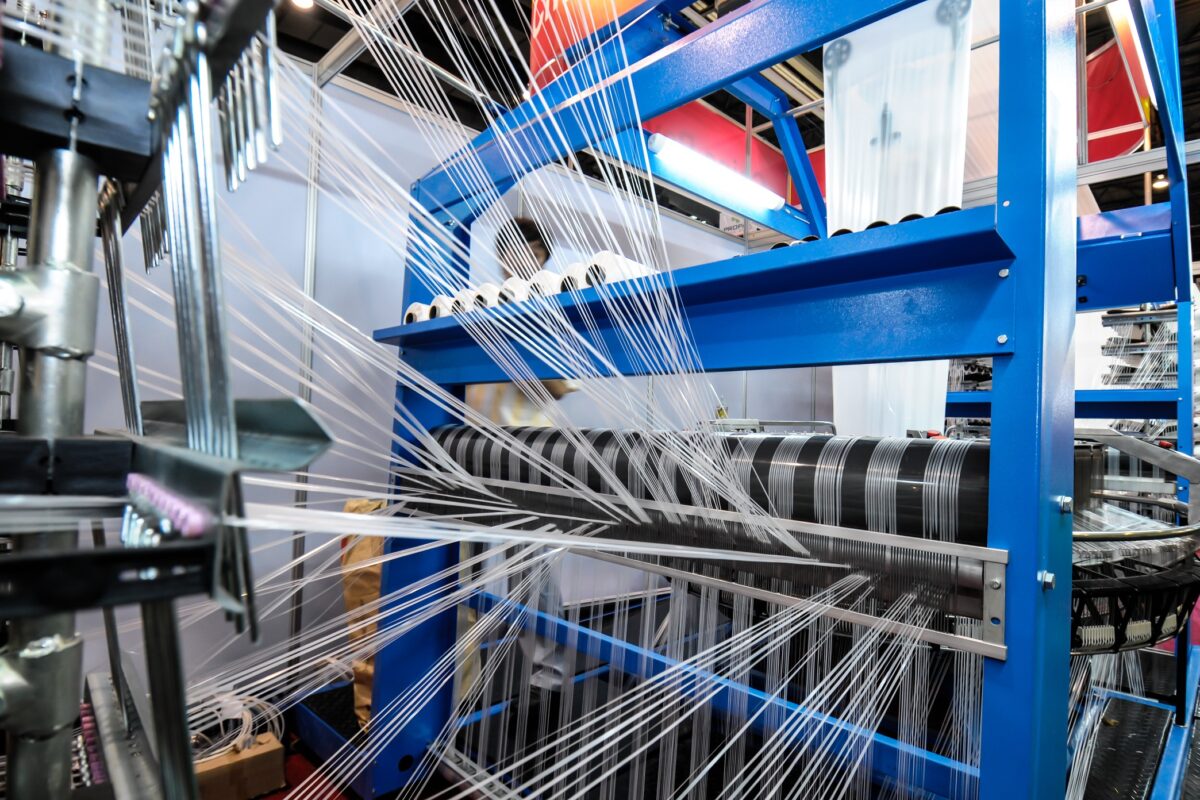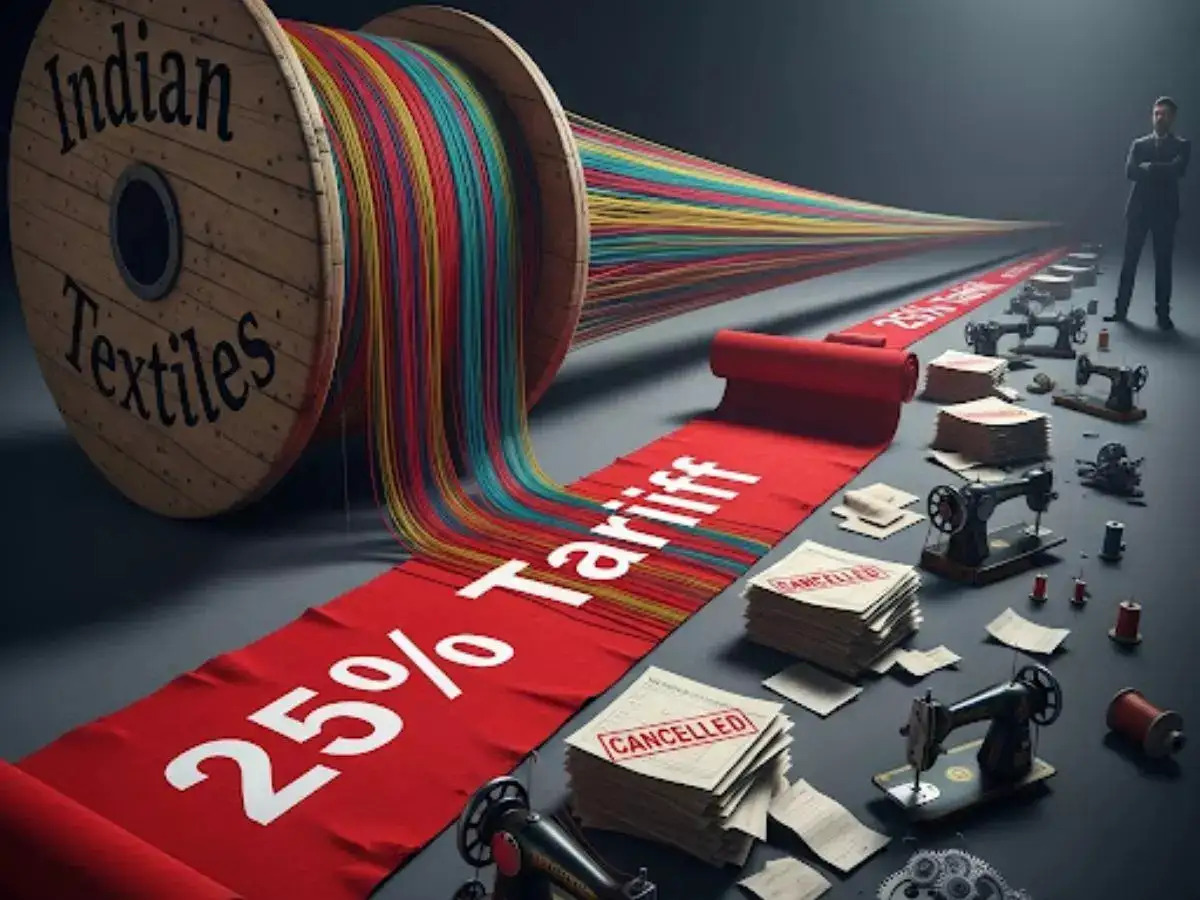FW
At the recent Texprocess Atlanta, the IAF organised and moderated a panel discussion in partnership with SPESA. The discussions took a deeper look at technology, trying to find out how the apparel industry actually implements all the new technology and what that means for the industry. Panelists from different continents emphasized the international character of the IAF. The panel had: Dave Gardner, managing director of SPESA; John Stern, President of Methods Workshop; Han Bekke, President MODINT; Van Tucker, CEO of the Nashville Fashion Alliance; Ed Gribbin, President of Alvanon; Geoff Willis, CEO of Trigon Select; Mike Fralix, CEO of [TC]² en Stefano Festa Marzotto, CEO FBS Group en Member of the Board of Sistema Moda Italia.
The panelists agreed that for the industry to really change in a big way, just the technology is not enough. For large brands and retailers, really benefitting from the implementation of new technology requires a holistic view, all across the supply chain. It is about using technology to get the right product at the right place at the right time. For reshoring to take off, investments in access to finance and in improving drastically the knowledge of apparel production and fabric characteristics are crucial. It is relatively new terrain and it would be great if the initiatives from New York, Nashville, Amsterdam, London and Milan would share best practices to create a global reshoring knowledge hub.
China’s knitting industry exports accounted for more than one-third of China’s textile and garment exports during 2013 and 2014. In 2015, exports showed a 8.33 per cent growth over 2011. While knitted garment exports achieved a 3.14 per cent growth, knitted fabric exports grew at 36.74 per cent. Europe, the US and Japan remained the top three markets for Chinese knitted goods exports in 2011-15 with shares of 17.36 per cent, 11.88 per cent and 9.53 per cent.
During 2011 to 2015, the Chinese knitting industry developed steadily, backed by globalisation and technological progress. In 2015, there were 5,739 knitting enterprises. The operating revenue of these enterprises registered a growth of 24.42 per cent over 2011, growing annually at a compound rate of 5.61 per cent. The total profit of these enterprises was up 38.25 per cent over 2011.
China’s domestic market also played an important role in the development of the knitting industry during the five-year period, with 72.62 per cent production of large-scale enterprises sold in the domestic market in 2015, compared to 64.48 per cent in 2011.
The 10-nation Asean region has become an important market for China’s knitting industry. In 2015, export of knitted fabric to the Asean region was up 84.69 per cent over 2011, growing annually at an average rate of 16.58 per cent and accounting for 33.08 per cent of the total export of knitted fabrics from China.
Bangladeshi businessmen have agreed to help Thai exporters get zero duty for their textile products while Thai traders have agreed to help their Bangladeshi counterparts get the same facility for readymade garment products. Thailand has assured Bangladesh it would consider a tariff rate reduction for readymade garment products next year.
Bangladesh wants to engage with Thai businessmen and investors and is eager to present them with the promising business prospects. Some four or five telecom companies from Thailand are interested in investing in Bangladesh. Thai exports to Bangladesh were valued at about $800 million, while Bangladeshi exports to Thailand were estimated at $400 million during the last fiscal year.
The two countries have agreed to pursue direct coastal shipping links. Bangladesh and Thailand are both members of the seven-member Bay of Bengal Initiative for Multi-Sectoral Technical and Economic Cooperation (Bimstec). Annual trade between Bangladesh and Thailand could quadruple to $4.8 billion if direct coastal shipping links between the two countries are established. Goods shipped between the two countries currently pass through Singapore and take two weeks, a time period that could be cut to six days with direct shipping.
The link will lower trading and shipping costs of goods and services, saving time of cargo shipping.
India’s cotton exports during the 2015-16 season is estimated at around 60 lakh bales. Import prices work out to be lower than prevailing domestic cotton prices. And only those mills which can wait for over 30 to 45 days for delivery can enter the cotton import business. Meanwhile in the domestic market prices continued to rule high.
Prices have moved upward because the largest cotton stocks holders, ginners or farmers, are not interested in selling cotton. Due to the very hot season, there has been weight loss in cotton. Therefore, farmers are waiting for the rains to arrive. After the arrival of the monsoons, the cotton weight will once again increase due to the moisture and water factor. And it is during this period that farmers will unload their cotton so that they get higher prices.
Indian prices are quite high when compared to international prices of 67 cents per pound and there is no scope for exports. However imports are feasible. Total cotton exports till May-end are estimated at 56 lakh bales and by the end of the season they would be to the order of 60 lakh bales. Cotton demand till May-end was 233 lakh bales.
Inspired performances by supply chain partners in FY 2015-16 contributed to the best year to date for Sri Lankan apparel powerhouse Brandix, which honoured its top vendors at a gala Vendor Summit in Sri Lanka recently. The top 100 vendors from the 350 that accounts for Brandix’s annual raw material spend attended the summit, half of them from 14 overseas locations. Presenting these key suppliers with an insight into the dynamics that propel the industry and a glimpse into the future, Brandix forecast it would double sales in the next five years, through a concentration on speed, quality, innovation and price.
Brandix had 530 vendor partners on its supply chain when the Group hosted its last Vendor Summit in 2011. While its business grew by 63 per cent in the five years that followed, the number of vendors supplying raw materials reduced to 350, and could fall to 150 by 2020, according to the organisers.
Said Brandix Group Chairman Priyan Fernando in his keynote address titled ‘A journey to best-in-class,’ their industry is one of intense competition where the dynamics are highly emotional on the one hand, and quite rational on the other.
Meanwhile, Brandix CEO Ashroff Omar cautioned that 2016 would be a ‘rough year’ given the headwinds that the retail industry is facing, but said the Group is confident it will ride the storm successfully and prevail with the support of its supply chain partners.
Bangladesh’s readymade garment exports to Turkey have declined by 7.67 per cent in the first 10 months of the 2015-2016 fiscal year. Fall in exports earning is mainly due to two reasons: Turkey’s economic slowdown and Turkey’s recent decision to impose duty on apparel imports. In September 2011, Turkey imposed a duty at a rate of 17 per cent on apparel imports from the least developed countries, including Bangladesh, mainly to safeguard its readymade garment and textile industry. Since then, Bangladesh’s readymade garment exports to Turkey have been declining.
Following readymade garment products, jute and jute products are one of Bangladesh’s major export items to the Turkish market. Export earnings from these two products also saw a downtrend in the 2015-2016 fiscal year. In the 2014-2015 fiscal year, the country’s export earnings from readymade garments to Turkey decreased by 21.58 per cent from the previous fiscal year.
In recent times Turkey has been trying to increase the capacity to meet the domestic demand for readymade garments and as such a duty was recently imposed on imports. Shipments dropped to $488.08 million in fiscal 2014-15 from $622.37 million the previous year. The Turkish economy is struggling due to the refugee crisis in Europe.
Bangladesh will reduce corporate tax to 20 per cent from the existing 35 per cent for the readymade garment industry. The readymade garment sector is one of the main exporting sectors of Bangladesh. This sector is making important contributions to GDP growth and employment generation and says the reduced tax rate will ease the burden and help it become more competitive.
During July-April of the current fiscal year, Bangladesh’s garment export earnings stood at $27.6 billion compared to $25.3 billion during the same period of the last fiscal year. Export earnings from woven garments and knitwear recorded an increase of 12.7 and 7.3 per cent respectively. Notably among the main export markets exports to both the USA and the Euro zone have increased.
Bangladesh is providing substantial tax benefits to the apparel sector, acknowledging its contribution to the economy. The textile sector is also being encouraged. Addressing its demands, as well as to help it to move forward, duty on stripping chemicals will be reduced to 15 per cent from the existing 25 per cent. Duty on flax fiber and spandex or elastraometrics, applicable now at 10 per cent, will be reduced to five per cent.
Arvind OG Nonwovens has launched five brands for bag house filtration in India. The five newly launched brands are: Fiberlox, Duotech, Checkstatic, Glasstech and Mircofelt. Arvind OG Nonwovens is a joint venture between Arvind and the Japan-based OG Corporation. It has installed custom-built machines designed to achieve Japanese quality standards and capable of handling various fibers such as M-aramid, homopolymer acrylic, poly-phenelyene sulfone, polyimide, polypropylene and polyester.
The five brands will make Arvind OG a player with the largest portfolio of world class products manufactured in India for bag house filtration. The joint venture manufactures high quality nonwoven fabrics using needle-punch technology for bag house filtration. The joint venture has the goal of manufacturing and selling the first Japanese-Indian non-woven fabric products. The factory is located on the outskirts of Ahmedabad and it will expand the goods it produces sequentially from non-woven fabric for dust collection filters to non-woven fabric for car upholstery materials and create a sales network based in India.
OG Corporation is a specialised trading company that sells, exports, imports and manufactures a variety of high value products in Japan and world-wide. The main products include dyes, pigments, dyeing chemicals, industrial chemicals, paints, raw resins, resin products, pharmaceuticals, functional materials, foodstuffs, machinery and equipment, related software products and real estate leasing.
"June 5 th was World Environment Day, a day when United Nations wants everyone to reflect on ours and others evil doings towards the environment. This year the theme was: Zero tolerance for illegal trade in wildlife. Wildlife here is not restricted to animals only; it includes everything grown in the wild including plants, fungi, deserts etc ."
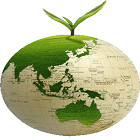
June 5th was World Environment Day, a day when United Nations wants everyone to reflect on ours and others' evil doings towards the environment. This year the theme was: Zero tolerance for illegal trade in wildlife. Wildlife here is not restricted to animals only; it includes everything grown in the wild including plants, fungi, deserts etc. The 2016 theme highlights the fight against illegal trade in wildlife. Its slogan ‘Go Wild for Life’ is aimed at encouraging everyone to spread the word about wildlife crime and the damage it does, and to challenge all those around you to do what they can to prevent it.
Fashion and environment

Indeed, one aspect of fashion and wildlife is fur and fabrics made from animal skin. But the focus here is more eco-friendly clothing materials since we relate more to cotton and textiles than fur in everyday life. According to Shani Himanshu and Mia Morikawa of 11.11/eleven eleven, the true cost of a garment lies not in the price tag, but in the impact its production has had on the environment. As per, Earth Pledge, an NGO, an average American throws away nearly 70 pounds of clothing every year. And at least 8,000 chemicals are used to change raw materials into textiles and 25 per cent of the world's pesticides are used to grow non-organic cotton. These may just be numbers, but the irreversible damage to people and the environment’ is what needs attention.
For years, eco-friendly brands and designers have pleaded for sustainable fashion. But if numbers are to be believed the message hasn't reached the ears of fashion lovers and consumers. No one sees the ugly truth behind the glamour of fast fashion and designer clothes. In fact, fashion industry is the second largest polluter in the world.
As Dilip Kapur, President and Founder of Hidesign puts it, fashion is critical to involve the young in environmental activities. Ecology is not just for the serious academician for it affects all of us and what is the best way to take the message forward than fashion: cool, aspirational and what makes us all look the way we want.
Sustainable fashion the way forward Sustainable fashion is the way to combat the bad reputation earned by the industry. Use of environment friendly materials and socially responsible methods of production is what defines sustainable fashion. So, what does the industry think about the practice and feel about the environment.
Already there are high fashion brands like Stella McCartney that are frontrunners in sustainability and more surely will join for a more sustainable fashion future feel experts. The industry can contribute by using natural materials, natural dyeing methods, recycled materials, zero water usage dyeing methods etc. Less usage of electricity generated from conventional means will also be a step forward to save the environment.
Often, the industry jumps on the bandwagon to sell more and many so-called ecological collections by spending big on PR initiatives but very rare are designers like Stella McCartney who live up to their ideal. However, these behavior and attitudes are changing worldwide and one can expect it will change in India also. By making eco-friendly clothes with organic raw materials, organic dyes, high quality clothes made from recycled and reused articles, use of solar power plants as an alternative power source to minimise pollution, the fashion industry can play a significant role in minimizing the carbon footprint.
Turkey is keen on acquire international brands with strong marketing networks abroad, Istanbul Apparel Exporters Association (İHKİB) Chairman Hikmet Tanrıverdi announced recently. Tanrıverdi says the Ministry of Economy was already working on potential procurements. He stressed the importance of design in different sectors and said Turkey should focus on design in its growth policy. He pointed out design can add value to a product and added that consumers are always looking out for different products so it is important to catch up with their demands.
He says there are thousands of companies that produce but do not have any designing projects. Turkey should bring these companies and designers together to set up models they can collaborate. One cannot compete with the world by producing cheap goods so to outdo countries that have cheap labour they should outdo through their designs.
The İHKİB chairman added since Turkey has the know-how, it can acquire international brands that have strong marketing networks. He said the Ministry of Economy was working on international brand procurement while Eximbank provided long-term loans but suggested a relaxation in loan conditions. The İHKİB chairman said there were currently 703 research and development centres and 115 design centres in Turkey, which clearly emphasises the importance of design in the sector.
He also noted by 2023 the textile sector is targeting a total of $50 billion in exports, of which products worth $30 billion will be produced in Turkey, while the rest will be designed in Turkey and produced abroad.


